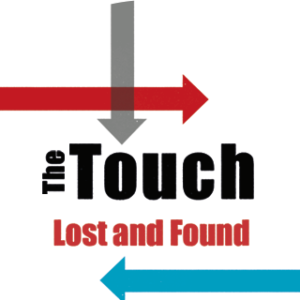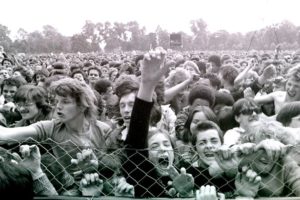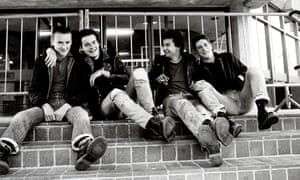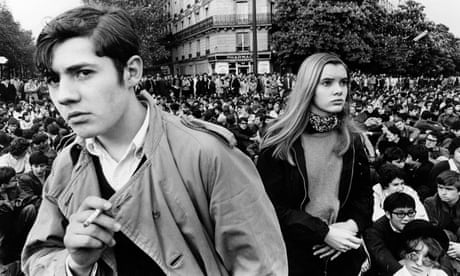
Mods Of Your Generation Interview – The Touch – They’re back after 40 years with their new album – Lost and Found MODS OF YOUR GENERATION·TUESDAY, 2 JULY 2019·
The Touch are back after 40 years with their brand new album ‘Lost and Found’They were a mod revival band in the 70’s recording one album which was confusingly released by their record company under the wrong name. as well as know track titles or any other information about the band.I was kindly given a copy of the NEW album before its release and became instantly hooked to find out more about the previous album and the confusion around the first albums release. There may of been confusion around the previous album however there is no confusing who they are now. Whether your a fan of great music or a new fan of The Touch, whether you just like the Mod revival, or brilliantly written creative and relatable music. I suggest this album needs to be part of your collection.I was so excited about the new and old album that i immediately needed to interview them to find out more. I am also incredibly intrigued to see what they do next.
(1) Where do you find inspiration for your song lyrics & music? The music usually starts with an idea that magically arrives’ in the head, either as a riff, or a melody. It’s rare that one starts out with the idea to create a particular progression, and more often the rest of the music gets built around that one idea. Lyrics are a different matter. They are almost always either autobiographical or about something we’ve observed. For example, we must have been in the depths of teenage misery when we wrote Grey Day and I’m a Stranger as they are certainly based on real events. On the other hand, Walk in the Park, and Stop Stop are social commentaries. (2) How and when was the band formed? An early version of the band (The Flames) came together as a unit around 1976 with Son Jack on lead guitar and vocals, Gerry on rhythm guitar, Charlie on drums and Jim Henebury on bass. When Jim left, for a while we were 2 guitars and drums, weird but it sort of worked. We used to rehearse at Alaska Studios in Waterloo round the corner from the famous Wellington pub where many of the great early mod revival bands used to play. The studio was owned by ex-Vibrators bassist Pat Collier, and it’s thanks to him that we got started properly, but more about that later.
(3) When & where was your first gig? As The Flames our first gig was the Rochester Castle, Stoke Newington November 3, 1977 opening for the Stukas. We also supported them every other Thursday that month. As The Touch, our debut was at the Nashville on Dec 29, 1979 supporting the Bishops.
(4) Has anyone played a major role in your music career? We’d have to say that Alan May, Dizzy Holmes, and Albert Cummings are the three kings for us right now as they are responsible for us being back together. Another big shout out goes to Pat Collier who got us started in the first place. We were a scrappy 3 piece called The Flames rehearsing at his Alaska Studios in London in ’77 when he helped us out playing bass, booking our first gigs, and helping us with promotion. Having him produce this album was brilliant and brought things full circle. (5) Your new album was recently released. What has the reaction been? We’ve been blown away by the comments and overall reaction, really, just staggering. You usually expect a spread of opinions in the feedback and so far it’s been just amazing.
(6) What were the biggest challenges in doing this album? That’s easy. Time. Son Jack lives in the states, Dave is in Devon, and Charlie and Gerry are in London, so trying to find time when we could all be in the same place at the same time was hard. It’s amazing we managed to get together as often as we did, and over a 6 month period Son Jack flew to London 5 times to get this done.The second biggest challenge was re-learning songs that none of us had touched in 40 years. This involved converting lots of old dusty cassettes into MP3’s and hunting through old boxes of lyrics to track down the words and song structures. (7) Where can fans buy or download the old & new albums? Pretty much everywhere! There are a bunch of options:1/ Via Paypal (UK and Europe only and incl s&h) send £13 to g.czerniawski@uel.ac.uk2/ Worldwide CD fulfilment via CDbaby at https://store.cdbaby.com/cd/thetouch43/ For streaming and downloads it’s on Amazon, iTunes, Spotify, Google Music, Deezer, Napster, Pandora, Shazam, Tidal, Youtube Music and a bunch of other places.
(8) Have you got any future gigs coming up and what’s next for the band? We have just one more gig on the books at the Mod Weekender in Brighton on August 24th. We’re at the Hope and Ruin in Queen Street and are playing a double bill with the Teenbeats. Last time we played together was at Marquee in ’79 I think so this will be a very special gig. We’re also pricing it for the fans at £13 on the night, or £10 in advance at http://bit/ly/TouchTeenbeats.

(9) What’s the story behind the first album being released under the wrong name? We have theories but would risk getting sued for defamation of character if we shared them J. Let’s put it down to being young, naive, and star-struck at having an album at the age of 18. Twenty/twenty hindsight and all that.
(10) Can we look forward to another great third album? Haha! Mate, we’ve just finished this one and that took 40 years! Seriously though, it’s too early to tell but if we think we can do a knockout third album, and there’s demand for more then we’ll definitely consider the idea. (11) After the band disbanded after confusion over release of first album, what did each of the members go on to do musically or other? Son Jack: I didn’t play for over twenty years. It was only after moving to the states that I got the blues bug, and started trying to learn how to play it. I started out playing solo, then duo, then full on 4-piece band and enjoyed a 10 year career playing blues all over the world and recording 4 albums. Best part was getting to meet some amazing people like BB King, and we even got to open for Chuck Berry in the legendary Duck Room in St Louis.Gerry: I spent a few years playing in different bands including the tail end of The Fixations, Bad Karma Beckons, Waving Not Drowning and Mojo Hand. I’ve got a ‘day job’ but the music side of things has never really left my soul so keep my hand in one way or another.
Charlie: Although I played on the early demo’s included on the Detour release, I had left the band before the first album was recorded so didn’t actually play on it. Instead I went back to education and retook some exams. Played drums for garage band called Bad Karma Beckons with Gerry, they released an album, Mutate and Survive, in 1986. Currently also playing in a couple of active London bands namely The Phobics and The Beatpack.”Dave: After the touch I played in a number of new romantic groups in London including The Marines, and concentrated on learning the keyboards and developing my song writing. In 2000 I spent ten years living in Catalonia and during that time played in a popular dropzone band.

(12) When did the band decide to get back together and why? We got “re-discovered” through an insane set of unlikely events about 2 years ago. It’s a really long story but in short, Alan May and Dizzy Holmes tracked us down. Alan urged us to consider getting back together, and Dizzy wanted to do an official re-release of the original album on his Paisley Archive label. Alan also put us in touch with London promoter, Albert Cummings, who offered us a gig. So basically, everything was lined up and we had a reason to get back together. Without Alan, Dizzy and Albert I don’t think we would have bothered so we’re incredibly grateful for their support and encouragement. (13) Where would you like to see the band in a few years and what can we expect from you in the future? We’d LIKE to see us being waited on hand and foot on a private Island in the Caribbean but that probably isn’t going to happen. We’re in this for the love of it, not the money so we’re not on the career path that the younger more ambitious acts are. As long as we’re making music together, even if occasionally, that will be a beautiful thing. (14) Do you have a message for fans and a response to the reaction the band has had from the new album? That’s an easy one. THANK YOU FROM THE BOTTOM OF OUR HEARTS! You’ve made a bunch of old geezers feel like teenagers again.
(15) How would you describe the bands musical style if you were to compare it to another band? That’s a tough question as our musical style doesn’t easily fit one definition, as it evolved over time. We started out playing rock’n’roll (Gene Vincent, Johnny Kidd, Chuck Berry etc) in Charlie’s basement around 1973, and then when punk rolled around we got into that for a couple of years. Then we did the whole mod revival thing which also blended with Power Pop. So, you’ll hear elements of all those phases in the songs.
Images from The Touch archives
Interview conducted by Johnny Bradley for Mods Of Your GenerationInterview (c) Johnny Bradley & Mods Of Your Generation 2019




